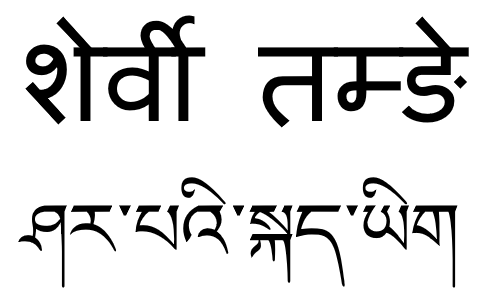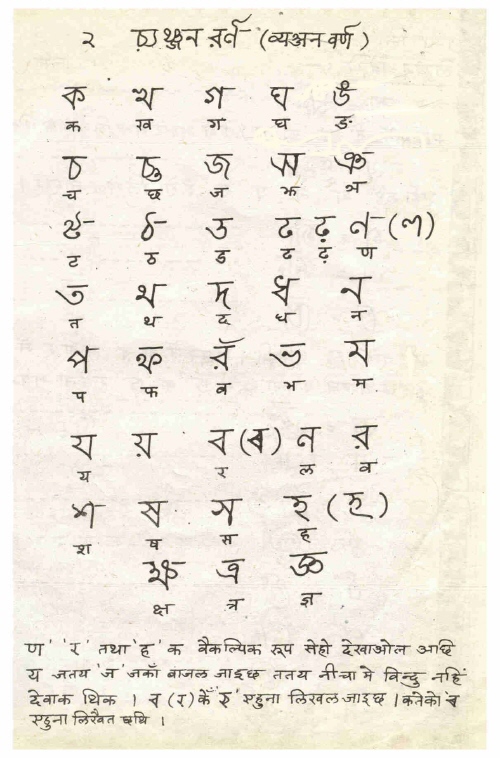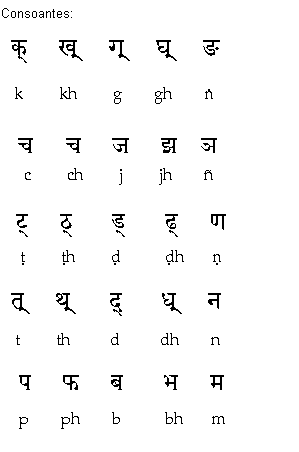|
Gaurishankar Rural Municipality
Gaurishankar ( ne, :ne:गौरीशंकर गाउँपालिका ), a part of Bagmati Province, Nepal, is a rural municipality located in Dolakha District. With Suri as its current official headquarters, the rural municipality consists of nine wards (previously seven Village Development Committees) covers an area of 681.39 km² and has a population of 17,062 in 2011. It is named after Mount Gaurishankar ( ne, :ne:गौरिशंकर हिमाल), which determines Nepal time (UTC +05:45), and is also home to Tsho Rolpa Lake (also Cho Rolpa ( ne, :ne:छो-रोल्पा ताल), one of the biggest glacial lakes in Nepal. Demographics At the time of the 2011 Nepal census, Gaurishankar Rural Municipality had a population of 17,140. Of these, 60.8% spoke Nepali language, Nepali, 19.2% Sherpa, 13.8% Tamang, 2.7% Jirel, 1.6% Newar, 0.7% Surel, 0.3% Magar, 0.3% Thangmi, 0.2% Gurung, 0.2% Maithili and 0.1% other languages as their first langua ... [...More Info...] [...Related Items...] OR: [Wikipedia] [Google] [Baidu] |
Province
A province is almost always an administrative division within a country or sovereign state, state. The term derives from the ancient Roman ''Roman province, provincia'', which was the major territorial and administrative unit of the Roman Empire, Roman Empire's territorial possessions outside Roman Italy, Italy. The term ''province'' has since been adopted by many countries. In some countries with no actual provinces, "the provinces" is a metaphorical term meaning "outside the capital city". While some provinces were produced artificially by Colonialism, colonial powers, others were formed around local groups with their own ethnic identities. Many have their own powers independent of central or Federation, federal authority, especially Provinces of Canada, in Canada and Pakistan. In other countries, like Provinces of China, China or Administrative divisions of France, France, provinces are the creation of central government, with very little autonomy. Etymology The English langu ... [...More Info...] [...Related Items...] OR: [Wikipedia] [Google] [Baidu] |
Sherpa Language
Sherpa (also Sharpa, Xiaerba, or Sherwa) is a Tibetic language spoken in Nepal and the Indian state of Sikkim, mainly by the Sherpa. The majority speakers of the Sherpa language live in the Khumbu region of Nepal, spanning from the Chinese (Tibetan) border in the east to the Bhotekosi River in the west. About 200,000 speakers live in Nepal (2001 census), some 20,000 in Sikkim (1997) and some 800 in Tibetan Autonomous Region (1994). Sherpa is a subject-object-verb (SOV) language. Sherpa is predominantly a spoken language, although it is occasionally written using either the Devanagari or Tibetan script. Phonology Sherpa is a tonal language. Sherpa has the following consonants: Consonants * Stop sounds can be unreleased in word-final position. * Palatal sounds can neutralize to velar sounds when preceding . * can become a retroflex nasal when preceding a retroflex stop. * can have an allophone of when occurring in fast speech. Vowels * Vowel sounds have the ... [...More Info...] [...Related Items...] OR: [Wikipedia] [Google] [Baidu] |
Jirel People
The Jirels ( ne, जिरेल जाति) is an ethnic Kirat The Kirati people, also spelled as Kirant or Kiranti, are a Sino-Tibetan ethnic group. They are peoples of the Himalayas, mostly the Eastern Himalaya extending eastward from Nepal to North East India (predominantly in the Indian state of Sikkim ...i group. Jirel are one of the 59 indigenous peoples in Nepal. They like to be called ''Jirpa'', which means "leopard-like people." Sherpa (''Shyar-pa''), are the "people of the east, easterners". Jirpa believe that they migrated to Nepal, Jiri, and Dolakha from the western part of Nepal. Jiri, the name of the place, came from Jirpa. They are the original inhabitants of Jiri and its adjoining villages in Dolkha district, the central region of Nepal. They have their own distinct language, culture, customs, rituals and lifestyles. They are mostly Buddhist but many of the Jirel adhere to other religions, like Christianity, Islam and Hinduism. They also worship ''Jhakri'' ... [...More Info...] [...Related Items...] OR: [Wikipedia] [Google] [Baidu] |
Newar People
Newar (; new, नेवार, endonym: Newa; new, नेवा, Pracalit script:) or Nepami, are the historical inhabitants of the Kathmandu Valley and its surrounding areas in Nepal and the creators of its historic heritage and civilisation. Page 15. Newars form a linguistic and cultural community of primarily Indo-Aryan and Tibeto-Burman ethnicities following Hinduism and Buddhism with Nepal Bhasa as their common language. Newars have developed a division of labour and a sophisticated urban civilisation not seen elsewhere in the Himalayan foothills. Newars have continued their age-old traditions and practices and pride themselves as the true custodians of the religion, culture and civilisation of Nepal. Newars are known for their contributions to culture, art and literature, trade, agriculture and cuisine. Today, they consistently rank as the most economically and socially advanced community of Nepal, according to the annual Human Development Index published by UNDP. Nepal ... [...More Info...] [...Related Items...] OR: [Wikipedia] [Google] [Baidu] |
Kami (caste)
Kami is an Indo-Aryan Nepali speaking group that primarily worked as metalists. Later Nepal abolished its grading system. The tribal designation of Khas is given in only a few contexts. the Government of Nepal legally abolished the caste-system and criminalized any caste-based discrimination, including "untouchability" (the ostracism of a specific caste) - in the year 1963 A.D. With Nepal's step towards freedom and equality, Nepal, previously ruled by a Hindu monarchy was a Hindu nation which has now become a secular state, and on 28 May 2008, it was declared a republic, ending it as the Hindu Kingdom. Even though it is illegal to discriminate people based on their caste, these people are widely discriminated in Nepal. A large portion of people who follow Hinduism still discriminate Kami and other so-called lower castes. While a small minority of the population claims that the problems related to caste based discrimination are no longer present in Nepal, many are fully aware th ... [...More Info...] [...Related Items...] OR: [Wikipedia] [Google] [Baidu] |
Tamang People
The Tamang (; Devanagari: तामाङ; ''tāmāṅ'') are an Tibeto-Burmese ethnic group of Nepal. In Nepal Tamang/Moormi people constitute 5.6% of the Nepalese population at over 1.3 million in 2001, increasing to 1,539,830 as of the 2011 census. Tamang people are also found in significant numbers in the Indian state of Sikkim and districts of Darjeeling and Kalimpong in West Bengal state of India and various districts in the southern foothills of the Kingdom of Bhutan. Such districts include the Tsirang District, the Dagana District, the Samtse District, the Chukha District, the Sarpang District and the Samdrup Jongkhar District. Emergent North-East : A Way Forward By H. C. Sadangi Tamang language is the fifth most-spoken language in Nepal. Etymology ''Tamang'' may be derived from the word ''Tamang'', where ''Ta'' means "horse" and ''Mak'' means "warrior" in Tibetan. However, there are no written documentations of Horse Riders. Some scientific research claims Tamangs ha ... [...More Info...] [...Related Items...] OR: [Wikipedia] [Google] [Baidu] |
Sherpa People
The Sherpa are one of the Tibetan ethnic groups native to the most mountainous regions of Nepal, Tingri County in the Tibet Autonomous Region and the Himalayas. The term ''sherpa'' or ''sherwa'' derives from the Sherpa language words ("east") and ("people"), which refer to their geographical origin of eastern Tibet. Most Sherpa people live in the eastern regions of Nepal and Tingri County, though some live farther west in the Rolwaling Valley, Bigu and in the Helambu region north of Kathmandu, Nepal. Sherpas establish gompas where they practice their religious traditions. Tengboche was the first celibate monastery in Solu-Khumbu. Sherpa people also live in Tingri County, Bhutan, and the Indian states of Sikkim and the northern portion of West Bengal, specifically the district of Darjeeling. The Sherpa language belongs to the south branch of the Tibeto-Burman languages, mixed with Eastern Tibet (Khamba) and central Tibetan dialects. However, this language is separate from L ... [...More Info...] [...Related Items...] OR: [Wikipedia] [Google] [Baidu] |
Chhetri
Chhetri (Kshetri, Kshettri, Kshetry or Chhettri), ( ne, क्षेत्री ; IAST: ''Kṣetrī'') historically called Kshettriya or Kshetriya or Khas are Nepali speakers of Khas community, some of whom trace their origin to migration from medieval India. Chhetri was a caste of administrators, governor and military elites in the medieval Khas Kingdom and Gorkha Kingdom (later unified Kingdom of Nepal). The nobility of the Gorkha Kingdom mainly originated from Chhetri families. They also had a strong presence in civil administration affairs. The bulk of prime ministers of Nepal before the democratization of Nepal belonged to this caste as a result of the old Gorkhali aristocracy. Gorkha-based aristocratic Chhetri families included the Pande dynasty, the Basnyat dynasty, the Kunwar family, and the Thapa dynasty, (Rana dynasty and other Kunwars). Khas Chhetris were traditionally considered a division of the Khas people with Khas Brahmin (commonly called Khas Bahun). They m ... [...More Info...] [...Related Items...] OR: [Wikipedia] [Google] [Baidu] |
Maithili Language
Maithili () is an Indo-Aryan language spoken in parts of Languages of India, India and Languages of Nepal, Nepal. It is native to the Mithila region, which encompasses parts of the Indian states of Bihar and Jharkhand as well as Nepal's eastern Terai. It is one of the 22 Eighth Schedule to the Constitution of India, officially recognised languages of India and the second most spoken Languages of Nepal, Nepalese language in Nepal. The language is predominantly written in Devanagari, but there were two other historically important scripts: Tirhuta script, Tirhuta, which has retained some use until the present, and Kaithi script, Kaithi. Official status In 2003, Maithili was included in the 8th Schedule, Eighth Schedule of the Indian Constitution as a recognised language of India, Indian language, which allows it to be used in education, government, and other official contexts in India. Maithili language is included as an optional paper in the Union Public Service Commission, UP ... [...More Info...] [...Related Items...] OR: [Wikipedia] [Google] [Baidu] |
Gurung Language
Gurung (Devanagari: ), also known as Tamu Kyi (, ; Tibetan: ) or Tamu Bhaasaa (, ), is a language spoken by the Gurung people of Nepal. The total number of all Gurung speakers in Nepal was 227,918 in 1991 and 325,622 in 2011. The official language of Nepal, Nepali, is an Indo-European language, whereas Gurung is a Sino-Tibetan language. Gurung is one of the major languages of Nepal, and is also spoken in India, Bhutan, and by diaspora communities in countries such as Singapore and Hong Kong. Geographical distribution Gurung is spoken in the following districts of Nepal and India (''Ethnologue''): *Gandaki Province: Kaski District, Syangja District, Lamjung District, Tanahu District, Gorkha District, Manang District and Mustang *Dhawalagiri Zone: Parbat district *Sikkim: South Sikkim, West Sikkim, East Sikkim Classification At higher levels, Gurung is a member of the Tibeto-Burman (or Trans-Himalayan) family. Robert Shafer classified Gurung within the Bodic division, sub-gro ... [...More Info...] [...Related Items...] OR: [Wikipedia] [Google] [Baidu] |
Thangmi Language
Thangmi, also called Thāmī, Thangmi Kham, Thangmi Wakhe, and Thani, is a Sino-Tibetan language spoken in central-eastern Nepal and northeastern India by the Thami people. The Thami refer to their language as ''Thangmi Kham'' or ''Thangmi Wakhe'' while the rest of Nepal refers to it as ''Thāmī''. The majority of these speakers, however, live in Nepal in their traditional homeland of Dolakhā District. In India, the Thami population is concentrated mostly in Darjeeling. The Thangmi language is written using the Devanagari script. Thangmi has been extensively documented by Mark Turin. Distribution Thangmi is spoken in Bagmati Province, mainly in the region of Dolakha; villages on Sailung Khola (The northern panhandle of the Ramechhap District; mainly in Gokulganga); eastern regions of Sindhupalchowk District; and by some elders among the population who migrated to the cities in the Kathmandu Valley. Very few ethnic Thami outside Dolakha and Sindhupalcok districts speak Than ... [...More Info...] [...Related Items...] OR: [Wikipedia] [Google] [Baidu] |
Magar Language
Magar Dhut ( ne, मगर ढुट, ) is a Sino-Tibetan Language spoken mainly in Nepal, Southern Bhutan, and in Darjeeling and Sikkim, India, by the Magar people. It is divided into two groups (Eastern and Western) and further dialect divisions give distinct tribal identity. In Nepal 788,530 people speak the language. While the government of Nepal developed Magar language curricula, as provisioned by the constitution, the teaching materials have never successfully reached Magar schools, where most school instruction is in the Nepali language. It is not unusual for groups with their own language to feel that the "mother-tongue" is an essential part of identity. The Dhut Magar language is sometimes lumped with the Magar Kham language spoken further west in Bheri, Dhaulagiri, and Rapti zones. Although the two languages share many common words, they have major structural differences and are not mutually intelligible. Geographical distribution Western Magar Western Magar ... [...More Info...] [...Related Items...] OR: [Wikipedia] [Google] [Baidu] |







